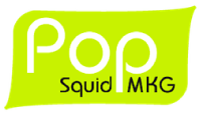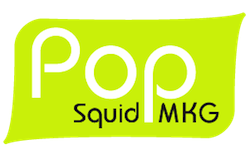How Do I Create a Successful Email Marketing Campaign?
Create a Successful Email Campaign in Five Steps While online marketing has become a multifaceted affair with numerous channels, email marketing is still one of the most impactful ways businesses attract customers. In a survey conducted in 2016, roughly 80% of professionals stated that email marketing drives customer acquisition and retention, which is more than either social media or organic search. This statistic is supported from the customer side too, with 60% of consumers saying they’ve made purchases as a result of receiving a marketing email. What does it take to make your email campaign successful? These five elements will give you a good start. 1. Figure Out Your Audience First, you need to know your audience. Specifically, get data about: Who they are What their interests are What their shopping activity looks like How long they’ve been subscribed When they’re likely to be online Where they are in the buying funnel With this information, you can segment your email list based on preferences, interests, shopping patterns, and so on. This is vital to personalizing your emails, increasing clicks, and directing prospects through the funnel. In fact, a segmented email is 50% more likely to get a click than an impersonalized one, so make sure your emails are personalized. 2. Create a Content Calendar Once you know your audience and have your calls to action (CTA) in order, it’s time to figure out logistics like scheduling and content. Your CTA is an invitation to take action, whether that’s contacting your company, visiting your blog, making a purchase, et cetera, and it’s arguably the most important part of any email. You don’t want to drown your audience in emails, and the emails you do send should provide real value. Putting together an email content calendar can help you pin down the frequency and content of your emails, which helps you to provide consistent value without overwhelming your subscribers. 3. Create Engaging Subject Lines About 35% of email users open emails based solely on the subject line, and an email with the recipient’s name in the subject line is more likely to be opened. Your subject lines should be quick, personalized, and neatly balanced between creative and professional. You should also be aware not to use terms or punctuation marks that may get you pinged and, as a result, limit your email’s deliverability. 4. Use Visuals and Content Wisely After the subject line, you need content. Visual content should be your first priority, but don’t neglect your written material either. The ideal length for an email is 75 to 100 words since that’ll get you the highest response rate (over 50%). When determining what content to include in each email, keep in mind that most readers will simply skim through it to get an idea of what you’re offering. The end goal is to direct them to do something, so don’t waste a ton of space directing readers to your CTA. 5. Optimize for All Devices With your audience, CTA, cadence, subject headings, and content hashed out, the final item on your checklist is to make sure your email is optimized for all devices. About 60% of all email opens come from mobile users, so it’s vital that your emails are compatible with smartphones and tablets. Creating an effective email campaign comes down to knowing your audience, grabbing their attention, and using your content effectively. If you’re ready to start creating an effective email workflow, contact Pop Squid MKG and we can help you to accomplish just that.


